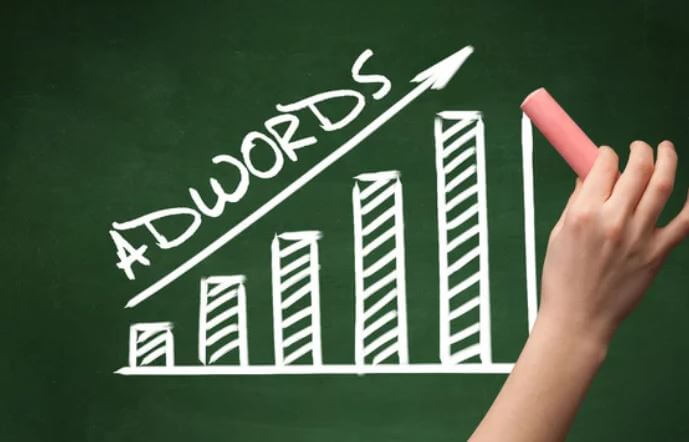“Optimize Your Campaigns for Maximum Performance and ROI with These Proven Strategies and Techniques”
Are you tired of struggling to get the most out of your Advanced Google AdWords campaigns? Are you seeking advanced tips and tricks to take your campaigns to the next level?
Look no further! This comprehensive guide will show seven advanced techniques to help you optimize your Google AdWords campaigns and drive more traffic, conversions, and revenue.
Utilize Advanced Targeting Options
Did you know that Google AdWords offers a range of advanced targeting options beyond just keywords and locations? You can target audiences based on interests, behaviors, demographics, and custom intent.
Use Ad Scheduling to Optimize Your Campaigns
Ad scheduling allows you to set specific times and days for your ads to appear, which can help you optimize your campaigns for maximum performance and ROI. Use data from your campaigns to identify the most effective times and days to run your ads.
Implement Ad Rotation for Better Performance
Ad rotation allows you to test different ad variations to see which ones perform best. Use data from your campaigns to identify the best-performing ad variations and rotate them for optimal results.
Leverage Ad Extensions for Increased Visibility
Ad extensions are additional information that can be added to your ads, such as phone numbers, addresses, and links to specific pages on your website. They can increase your ads’ visibility and relevance, leading to higher click-through rates (CTR) and conversions.
Take Advantage of Remarketing
Remarketing allows you to target people who have previously interacted with your website or ads, which can help you increase conversions and drive more revenue. Use remarketing lists to create targeted ads for specific audiences.
Use Automated Bidding Strategies
Automated bidding strategies allow you to set specific campaign goals, such as maximum cost-per-click (CPC) or target return on ad spend (ROAS). Google’s machine learning algorithms adjust your bids in real-time to help you achieve your goals.
Monitor and Adjust Your Campaigns for Maximum Performance
Monitoring and adjusting your campaigns is essential for optimizing their performance. Use data from your campaigns to identify areas that need improvement, such as ad copy, targeting, and bidding.
Conclusion
Google AdWords can be a powerful tool for driving traffic and revenue for your business. These advanced tips and tricks can optimize your campaigns for maximum performance and ROI.
FAQs
What are advanced Google Ads?
Advanced Google Ads refers to using advanced features and strategies within the platform to create more effective and targeted advertising campaigns.
These advanced features include tools such as audience targeting, ad scheduling, automated bidding, dynamic search ads, and more. Advanced strategies include remarketing, in-market targeting, and custom intent audiences.
By using advanced Google Ads features and strategies, advertisers can improve the performance and ROI of their campaigns and more effectively reach their target audience. However, it requires more expertise and knowledge of the platform to utilize these advanced features effectively.
What are the three levels of Google Ads?
When it comes to Google Ads, there are three primary levels:
- Campaign Level: The campaign level is the highest level of your Google Ads account. It is where you set your advertising goals and budget, choose your campaign type, and select your targeting options.
- Ad Group Level: Ad groups are the second level of your Google Ads account. They are where you group related keywords and create specific ads to target those keywords. You can have multiple ad groups within a single campaign.
- Ad Level: The ad level is where you create and customize individual ads for each ad group. You can create different types of ads, such as text, image, or video, and test different variations to see which ones perform best.
By using these three levels effectively, you can create targeted and effective campaigns that drive traffic and conversions for your business. Optimizing your campaigns at each station is essential for maximum performance and ROI.
What is the difference between Google AdWords and SEO?
Google AdWords and SEO (Search Engine Optimization) are two strategies for driving website traffic.
Google AdWords is an advertising platform developed by Google that allows businesses to create and display ads on Google’s search engine results pages (SERPs) and other websites that are part of the Google Display Network. Companies pay for displaying their ads and only pay when someone clicks on them. AdWords can effectively drive traffic and conversions for your business, but it requires a budget and ongoing management.
Conversely, SEO is a strategy for improving your website’s visibility and ranking on search engines like Google. SEO involves optimizing your website’s content, structure, and technical elements to make it more relevant and valuable to search engines and users. SEO aims to improve your website’s ranking on the SERPs for relevant keywords and phrases and drive more organic (unpaid) traffic.
The main difference between AdWords and SEO is that AdWords is a paid advertising platform, while SEO is a strategy for optimizing your website to improve your organic search ranking. AdWords can provide immediate results and targeted traffic but requires ongoing investment. SEO is a long-term strategy that can take time to show results but can drive significant traffic and revenue for your business.
What are the types of Google AdWords?
When it comes to Google AdWords, there are several types of campaigns you can create:
- Search Network Campaigns: Search Network campaigns display text ads on Google’s search engine results pages (SERPs) when someone searches for keywords related to your products or services. This is the most popular type of AdWords campaign and can effectively drive traffic and conversions.
- Display Network Campaigns: Display Network campaigns show ads on websites that are part of the Google Display Network, which includes millions of websites and apps. These ads can be in images, videos, or text and can be targeted to specific audiences based on demographics, interests, and behaviors.
- Shopping Campaigns: You can promote your products directly on Google’s search results pages. These campaigns display product ads with images, prices, and other details, making them ideal for e-commerce businesses.
- Video Campaigns: Video campaigns allow you to create and display video ads on YouTube and other Google partner sites. These ads can be in-stream ads that play before, during, or after a video or video discovery ads that appear in search results or on the YouTube homepage.
- App Campaigns: App campaigns allow you to promote your app on Google’s search network, display network, YouTube, and Google Play. These campaigns can help you drive app installs and in-app actions.
Each type of AdWords campaign has its strengths and weaknesses, and your chosen campaign will depend on your advertising goals, budget, and target audience. Choosing the right type of campaign and optimizing it for maximum performance to achieve the best possible results is essential.





